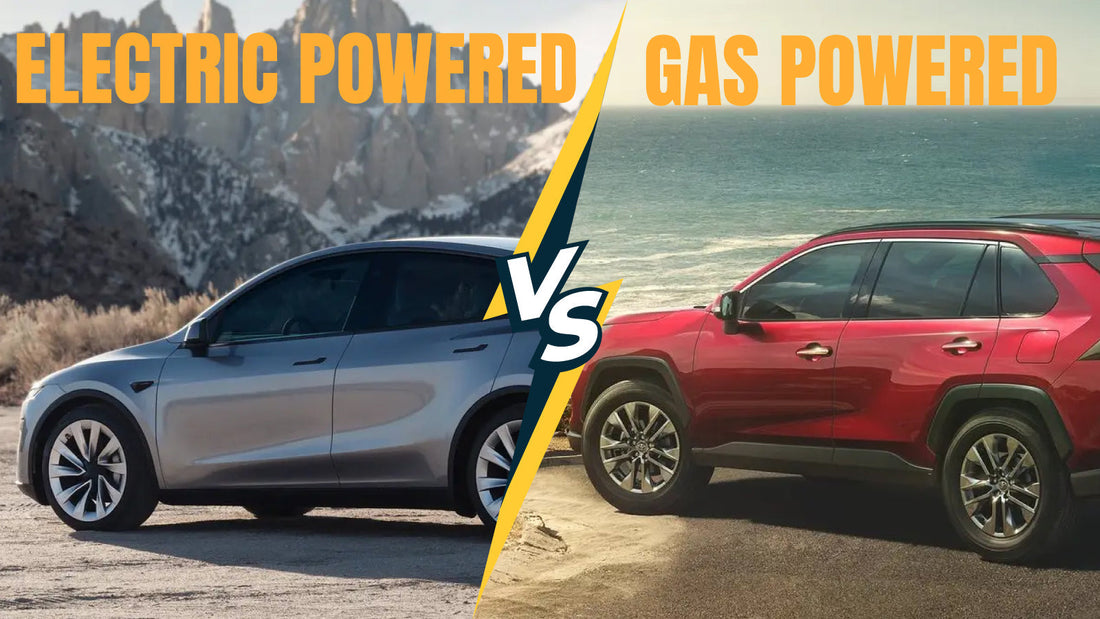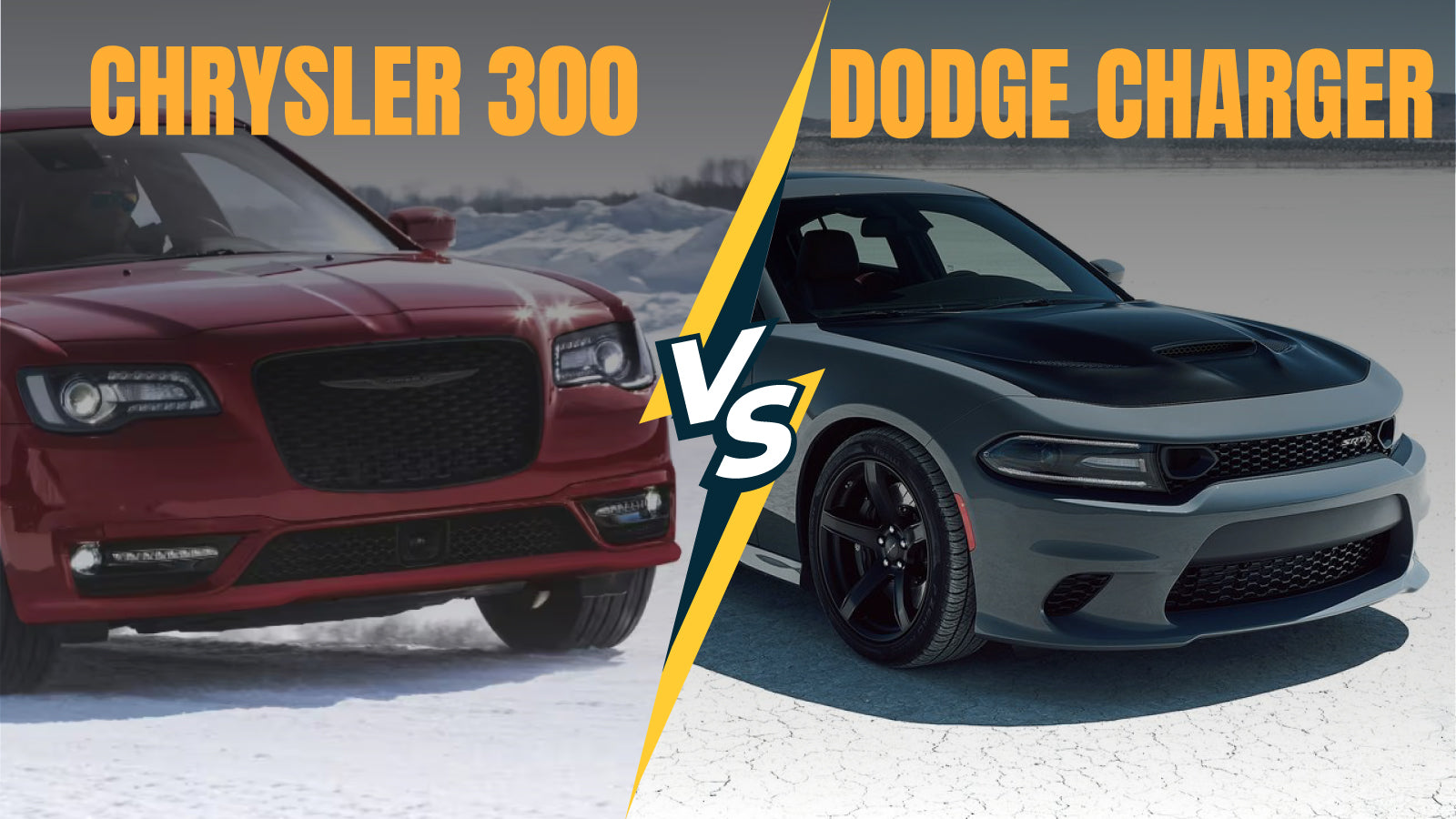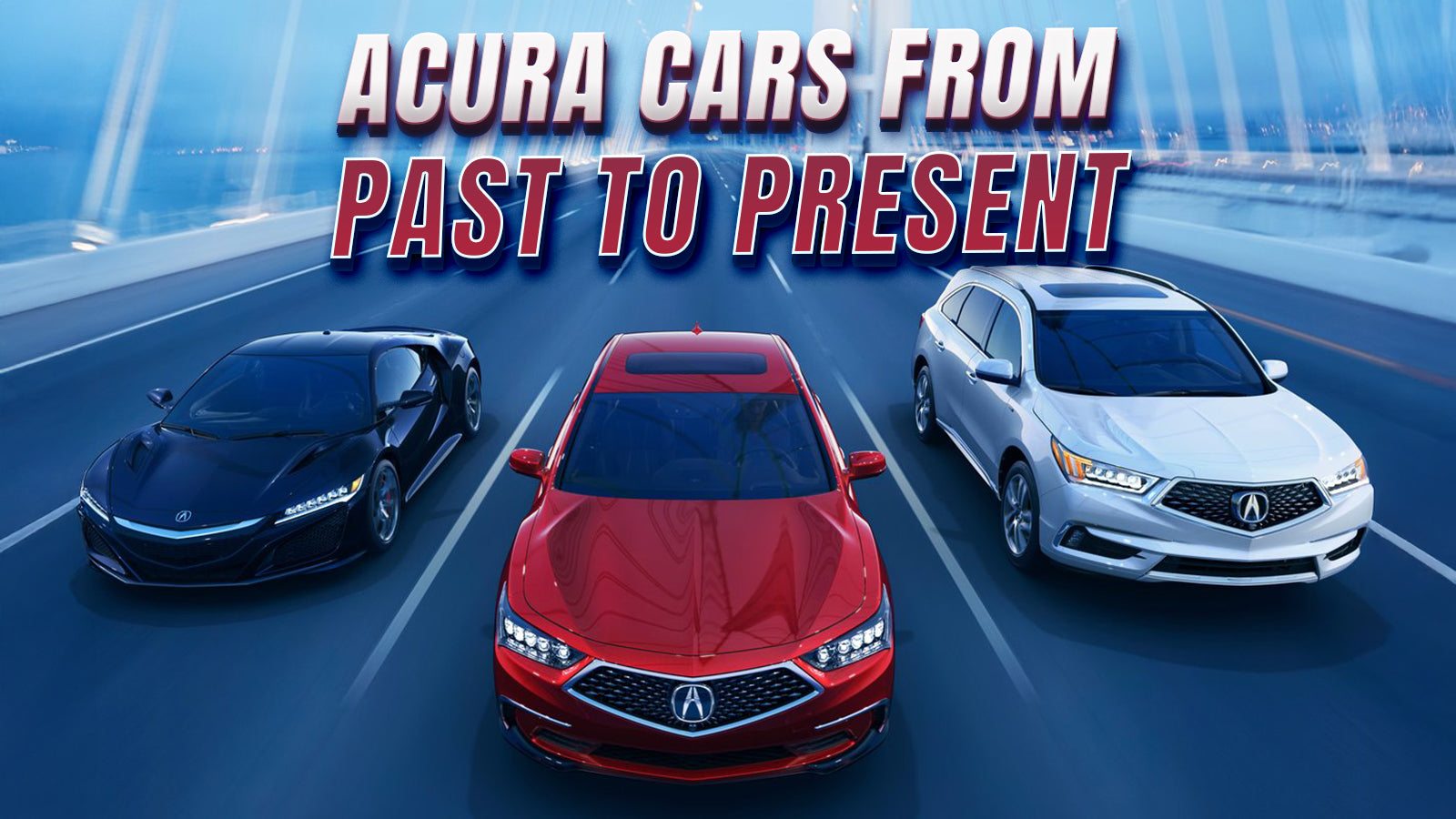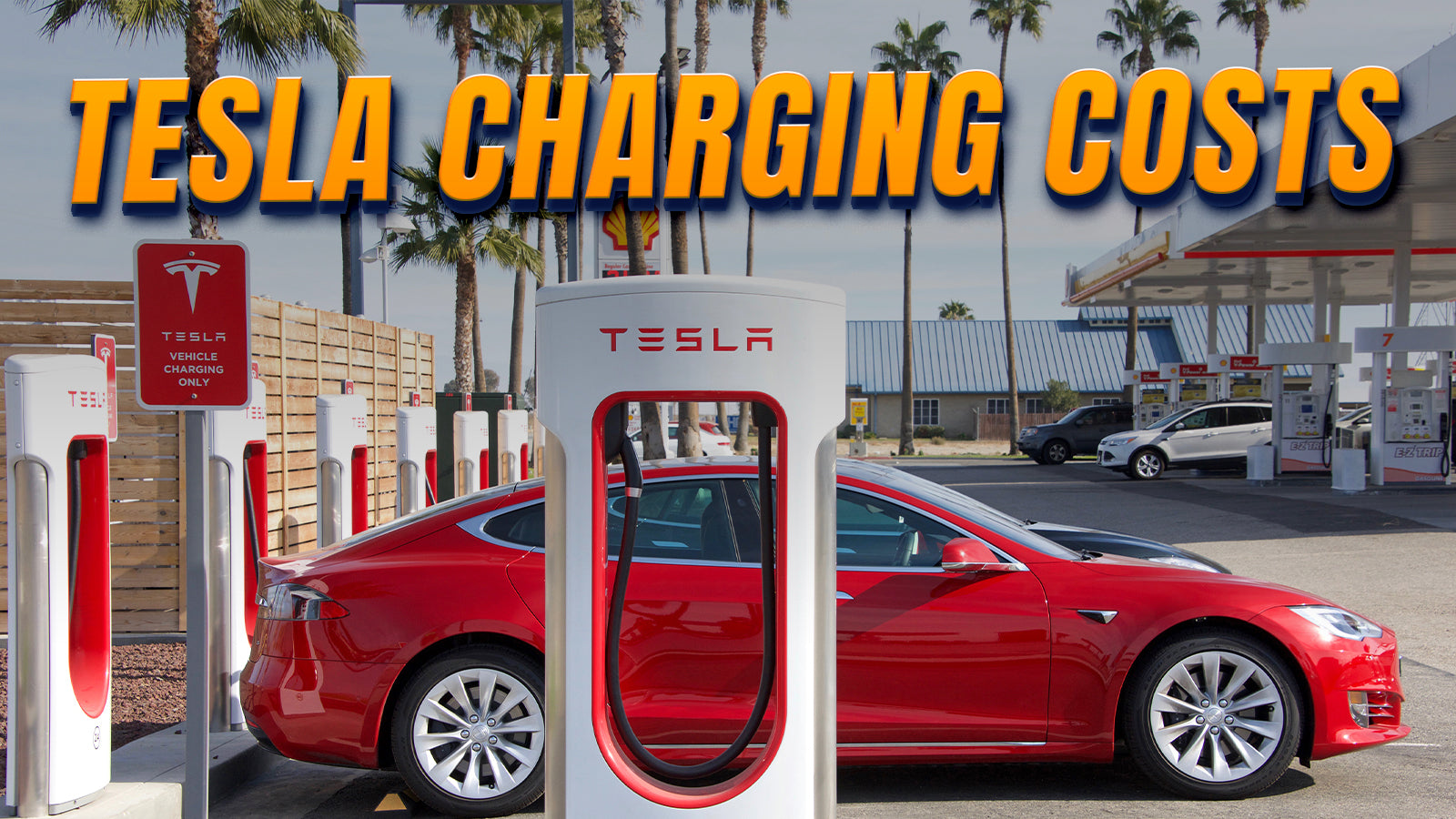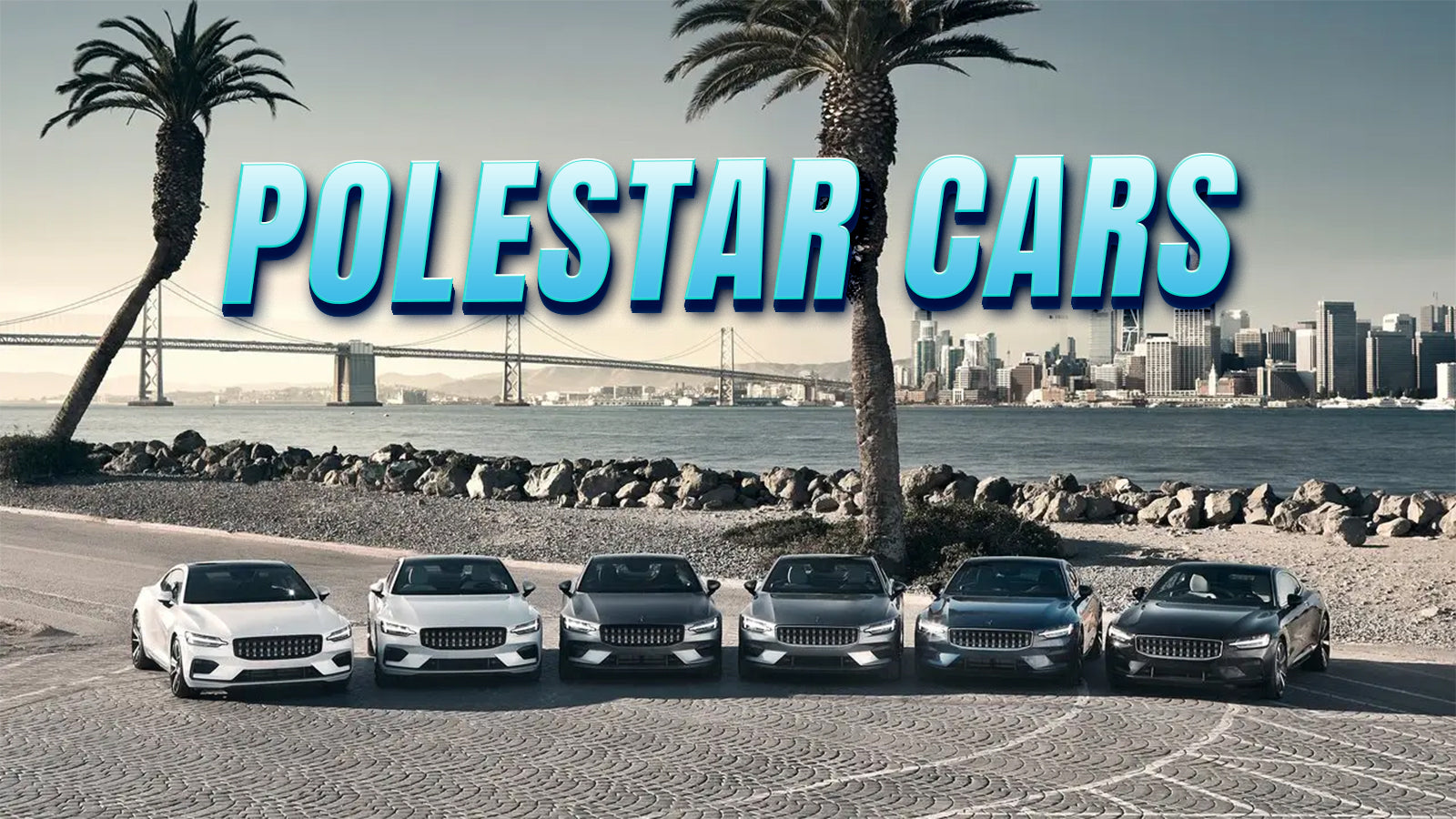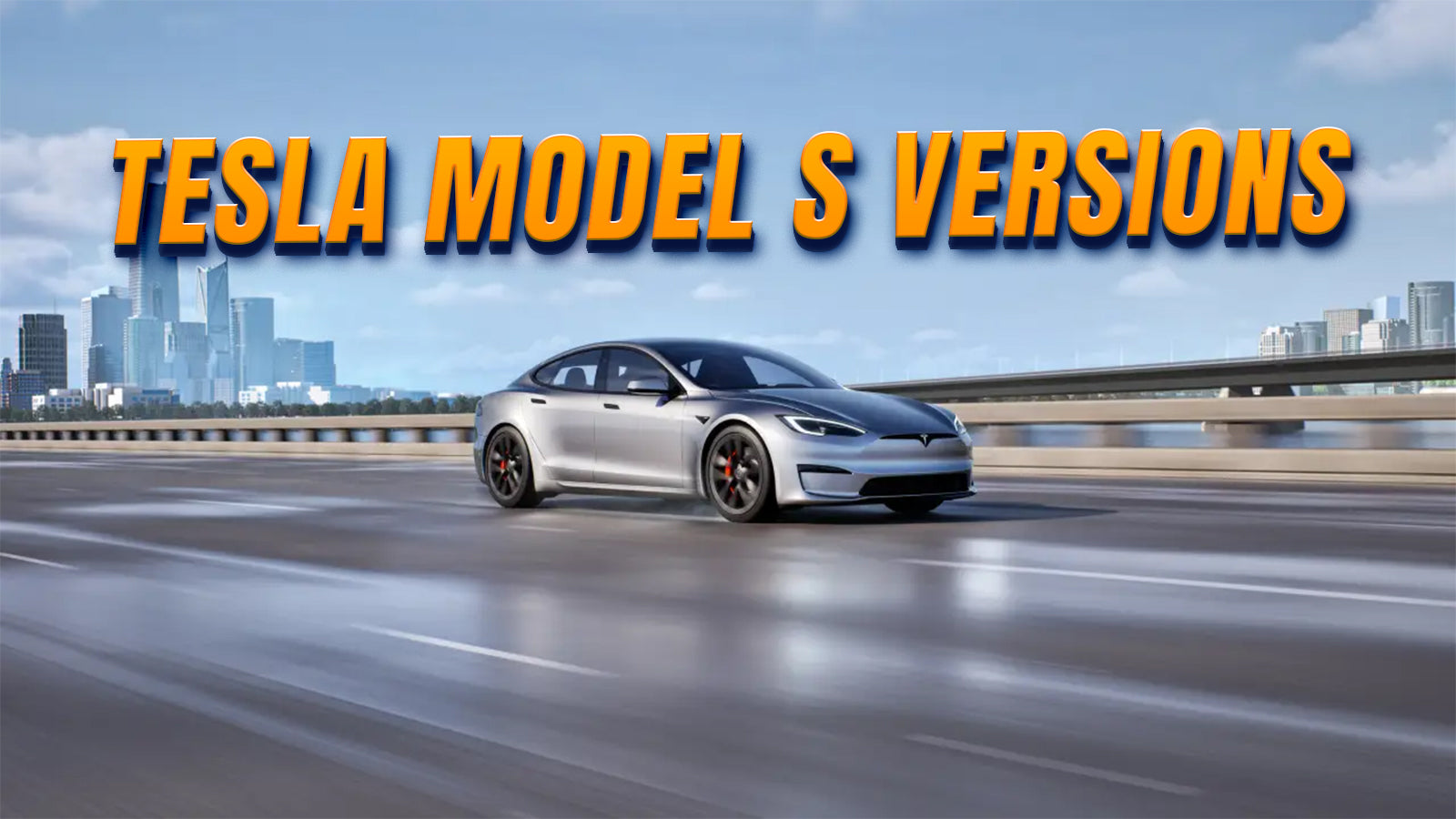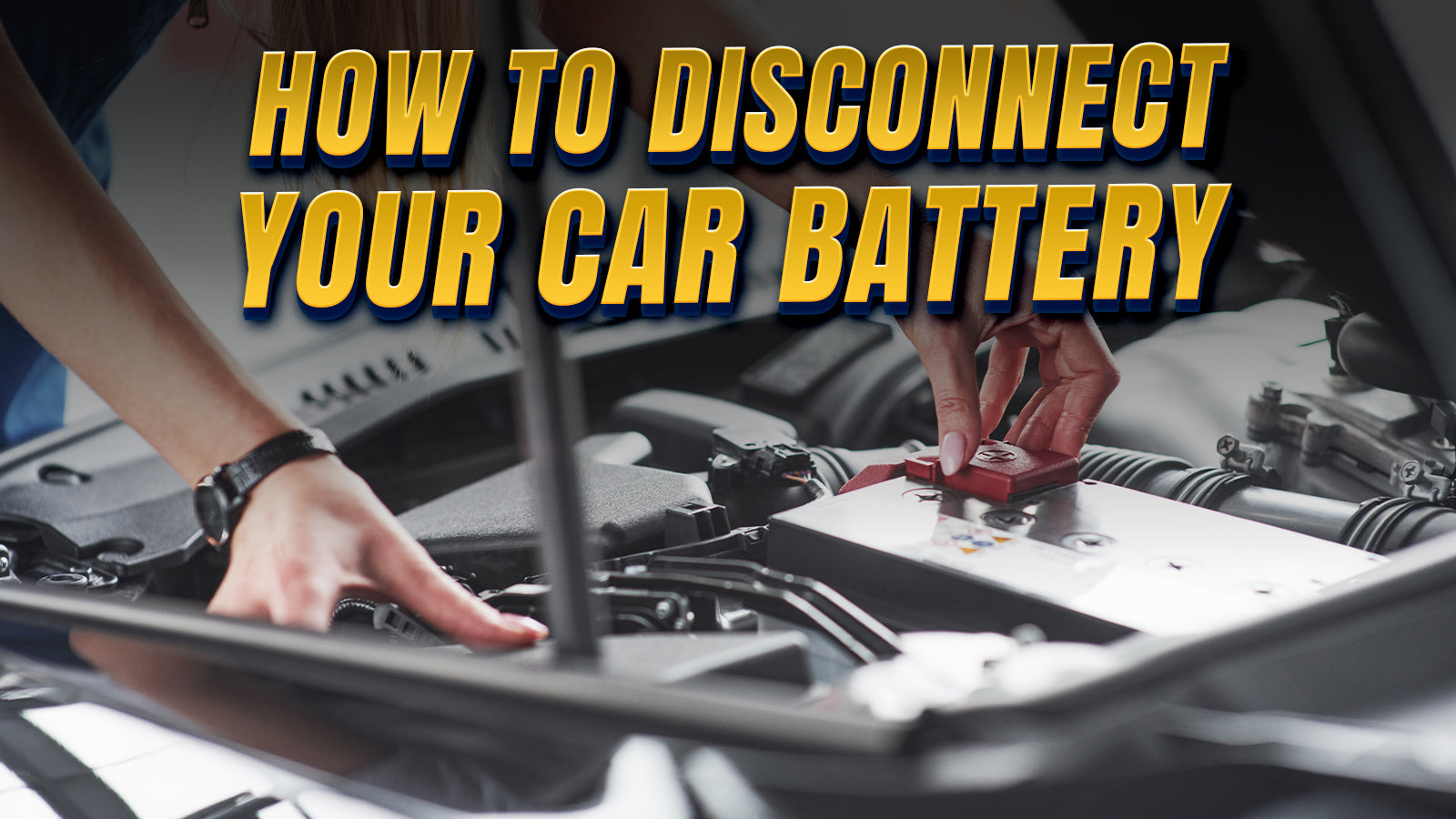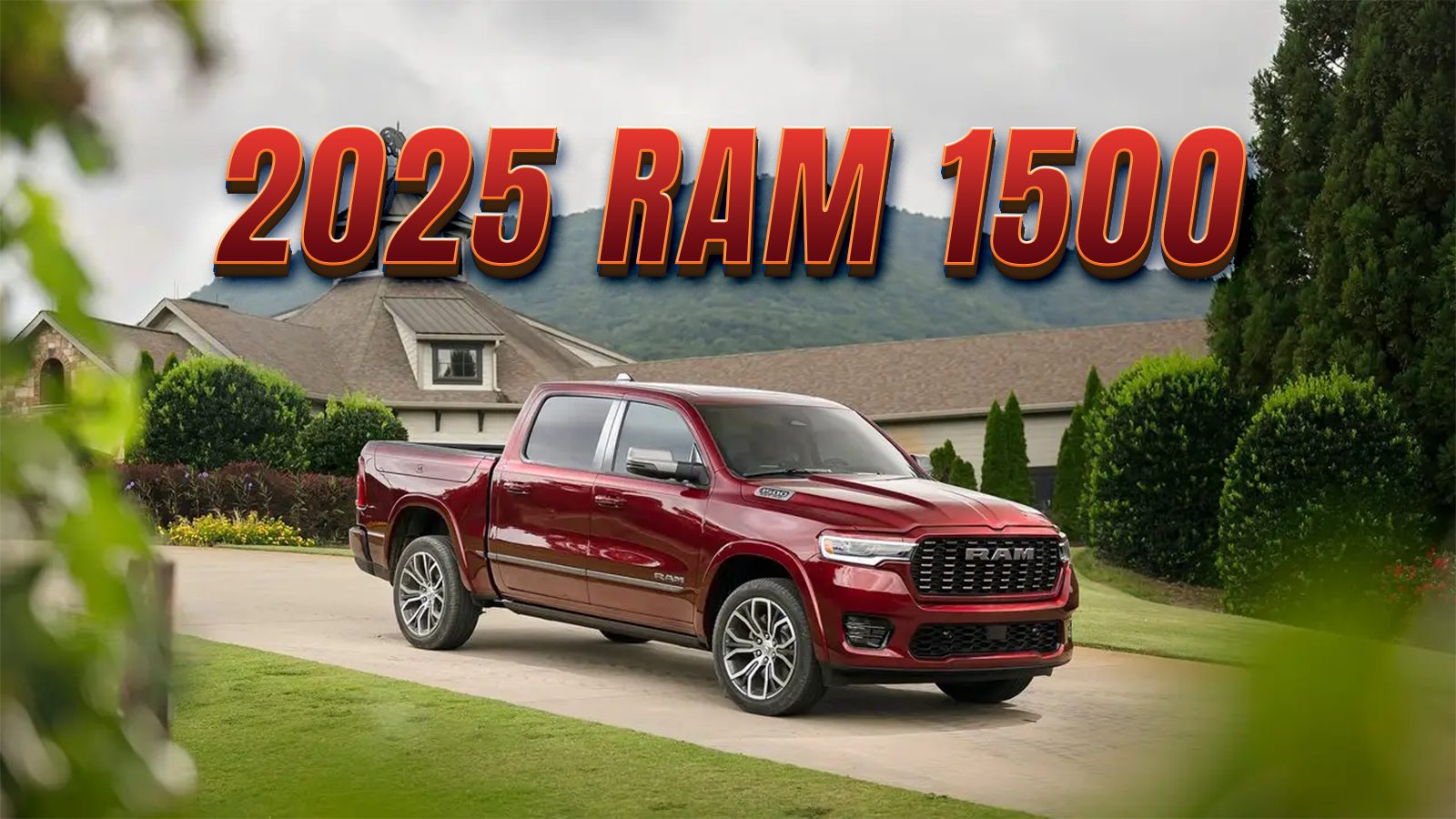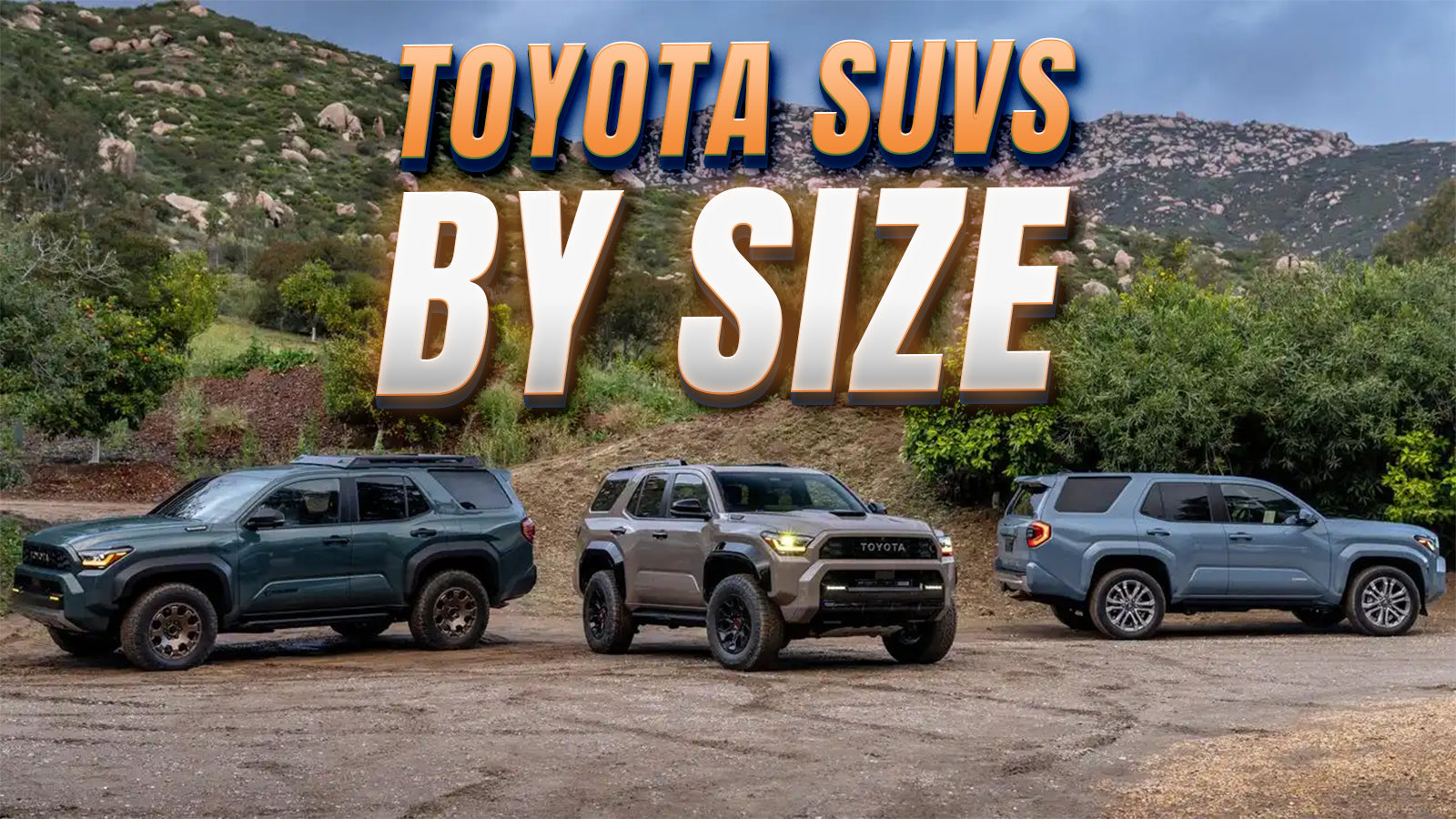SUVs Eléctricos Vs. a Gasolina: ¿Cuál Merece un Lugar en Tu Garaje?
Compartir
Decidiendo sobre tu próximo SUV ya no es tan fácil como solía ser. Se acabaron los días en que simplemente elegías el vehículo que parecía más genial y listo. Ahora, tienes una nueva pregunta que resolver: ¿Eléctrico o a gas?
Cada uno tiene ventajas y desventajas, y la elección es una cuestión de estilo de vida, presupuesto y prioridades. Pero no temas: estamos aquí para simplificarlo todo para ti, presentado de una manera fácil. Prepárate porque vamos a sumergirnos en el mundo de ¡SUVs eléctricos y de gasolina!
¿Por qué los SUVs? Hablemos de popularidad
Antes de entrar en los detalles de eléctrico vs. gasolina, hablemos brevemente por qué los SUVs son tan populares. Los SUVs son como las navajas suizas del mundo automotriz: son versátiles, espaciosos y están listos para cualquier cosa. Un SUV es confiable ya sea que estés transportando a los niños a la práctica de fútbol, emprendiendo un viaje de campamento de fin de semana o simplemente paseando por la ciudad.

Pero ahora, con el auge de los vehículos eléctricos (EVs), los SUV están recibiendo una renovación de alta tecnología. Entonces, ¿cuál deberías elegir?
SUVs eléctricos: El futuro está aquí
¿Qué hace que los SUVs eléctricos sean tan geniales?
SUV eléctricos están ganando popularidad debido a su diseño moderno y elegante e innovación constante. Aquí está la razón por la que están ganando atención:
Cero emisiones: Los SUV eléctricos obtienen energía de baterías, por lo que no tienen emisiones de escape. Si te importa el medio ambiente, esto es una gran ventaja.
Par instantáneo: Los motores eléctricos proporcionan potencia inmediata, lo que significa que obtienes esa gratificante sensación de "zoom" cuando pisas el pedal.

Costos operativos más bajos: Cargar un EV puede ser considerablemente más barato que llenar un tanque de gasolina, y los vehículos eléctricos requieren menos mantenimiento porque tienen menos piezas móviles.
Tecnología en abundancia: Los SUV eléctricos tienden a estar equipados con las últimas características tecnológicas, como enormes pantallas táctiles, sistemas avanzados de asistencia al conductor y actualizaciones de software por aire.
Los desafíos de pasarse a la electricidad
Por supuesto, los SUV eléctricos no son perfectos. Aquí hay algunas cosas a tener en cuenta:
Ansiedad por rango: A pesar de que los vehículos eléctricos tienen mejores autonomías, quedarse sin batería en viajes largos por carretera sigue siendo una preocupación para algunos conductores.
Infraestructura de carga: Encontrar una estación de carga puede no ser siempre fácil, dependiendo de dónde vivas.
Costo inicial: Los SUV eléctricos generalmente tienen un precio de etiqueta más alto que sus equivalentes de gasolina, pero los incentivos y los menores costos operativos pueden ayudar a compensar esto.
Hora de repostar: Llenar un tanque de gasolina toma minutos, mientras que cargar un vehículo eléctrico puede tomar 30 minutos o varias horas, dependiendo del cargador.
Presentando a las Estrellas del Mundo de los SUV Eléctricos
Tesla Model Y: La estrella del rock de los SUV eléctricos, con una aceleración absurdamente rápida y una decoración interior arcaica en el mejor sentido.
Ford Mustang Mach-E: Deportiva y elegante, la Mach-E demuestra que los vehículos eléctricos pueden ser tanto divertidos como funcionales.
Hyundai Ioniq 5: Construido con un estilo retro y carga ultrarrápida, este es un éxito entre el público.

Rivian R1S: Diseñado para aventureros, este resistente EV puede enfrentarse a senderos todoterreno como un profesional.
SUVs a gasolina: La opción probada y verdadera
Por qué los SUV a gasolina siguen dominando las carreteras
Los SUV a gasolina tienen décadas de existencia y no van a desaparecer pronto. Aquí está la razón por la que siguen siendo una buena opción:
Confiabilidad comprobada: Los motores de gas se han desarrollado durante más de 100 años, así que sabes lo que estás obteniendo.
Comodidad de Alimentación: Las estaciones de servicio son omnipresentes; llenar el tanque solo toma unos minutos.
Remolque y transporte: Montones de músculo: la mayoría de los SUVs a gasolina lo tienen de sobra, para que puedas remolcar un remolque o transportar cargas pesadas con relativa facilidad.
Costo inicial más bajo: Los SUVs de gasolina generalmente son más asequibles que los eléctricos.
Las desventajas de los SUV a gasolina
Aunque los SUV a gasolina tienen sus ventajas, no están exentos de desventajas:
Costos de combustible: Los precios de la gasolina pueden ser impredecibles, y llenar el tanque puede volverse caro con el tiempo.
Impacto Ambiental: Los motores de gasolina producen emisiones, contribuyendo a la contaminación del aire y al cambio climático.
Mantenimiento: Los vehículos a gasolina tienen más piezas móviles, lo que significa más oportunidades de que algo se descomponga.
Ruido y vibración: Los motores de gas pueden ser más ruidosos y menos suaves que los motores eléctricos.
Peor depreciación: A medida que los vehículos eléctricos ganan popularidad, los SUV a gasolina pueden depreciarse.
Presentando las Estrellas de los SUVs a Gas
Toyota RAV4: Una opción confiable y eficiente en combustible tanto para familias como para viajeros diarios.
Jeep Grand Cherokee: Nuevo consejo, resistente, elegante y listo para aventuras todoterreno.
Honda CR-V: Amplio espacio tanto para pasajeros como para carga, práctico, cómodo.
Ford Explorer: Este SUV tiene tres filas de asientos y es ideal para familias numerosas o para cualquiera que necesite asientos adicionales.
Potencia y Rendimiento: ¿Quién Tiene la Ventaja?
SUVs eléctricos: Par instantáneo, aceleración suave
¿Alguna vez has conducido un vehículo que se siente como si teletransportara cuando pisas el pedal? Eso es un SUV eléctrico. Los vehículos eléctricos no tienen transmisiones tradicionales, por lo que no hay retraso, ni revoluciones, sino una aceleración inmediata.

¿Quieres pruebas? Tesla Model X Plaid: 0-60 mph en 2.5 segundos. Este es el reino de los superdeportivos, una hazaña posible gracias a el poder de los motores eléctricos.
Además, los SUVs eléctricos conducen silenciosamente, como un susurro. Para aquellos que aman esa sensación suave y futurista de una experiencia de conducción de un EV, un EV es difícil de superar.
SUVs a Gasolina: Ese Clásico Coraje y Rugido
Por otro lado, SUV de gasolina trae el drama. La nota profunda y retumbante del escape, la sensación de un motor de combustión rugiendo al encenderse: hay algo visceral en pilotar un SUV potente de gasolina.
Los SUV a gasolina continúan excelente en remolque y potencia todoterreno. Un Ford Expedition o Chevy Tahoe remolcará bien más de 8,000 libras, mientras que incluso los mejores SUVs eléctricos perderá alcance y potencia mientras remolca, lo que hace que ese tipo de trabajo sea un desafío.

Si quieres músculo, SUV de gasolina todavía tienen su lugar.
Ganador: SUVs eléctricos para velocidad y suavidad, SUVs a gasolina para remolque y fuerza todoterreno.
Costo: ¿Cuál es la mejor inversión a largo plazo?
SUVs eléctricos: mayor costo inicial, más baratos a largo plazo
Los vehículos eléctricos tienden a tener un precio de etiqueta más alto, pero compensan con costos de funcionamiento más bajos.
No Gas Expenses: Cargar en casa cuesta mucho menos por milla.
Menos mantenimiento: Sin cambios de aceite, menos piezas móviles y menos visitas al mecánico.
Incentivos fiscales: Muchos gobiernos ofrecen créditos fiscales y reembolsos para hacer que los vehículos eléctricos sean más atractivos.
Aún así, vale la pena mencionar que EV las baterías se degradan con el tiempo y pueden ser costosos de reemplazar. La mayoría durará 100,000 a 200,000 millas, pero una batería nueva podría costarte miles una vez que la garantía haya expirado.
SUVs de gasolina: más baratos al principio, pero la gasolina dolerá
SUV propulsados por gasolina normalmente cuestan menos al principio, y hay muchas opciones usadas disponibles. Pero aquí está el problema:
Los costos del combustible son altos: El conductor promedio de SUV gasta miles anualmente en gasolina.
Más mantenimiento: Cambios de aceite, problemas de transmisión, sistemas de escape: todo suma.
Ganador: SUVs eléctricos para ahorros a largo plazo, SUVs a gasolina para asequibilidad a corto plazo.
Alcance y Conveniencia: ¿Es la carga de vehículos eléctricos un factor decisivo?
SUVs eléctricos: cargar lleva tiempo, pero está mejorando
La ansiedad por la autonomía es real. Incluso con los mejores SUV eléctricos disponibles hoy en día, estás hablando 250-350 millas por carga¿El verdadero problema? Infraestructura de carga. Un cargador doméstico (cargador de Nivel 2) es un 6-12 horas asunto. Los cargadores rápidos (carga rápida DC) te darán 80% en 30-40 minutos, pero no puedes encontrarlos en las estaciones de servicio.
¿Para los conductores urbanos, quién puede cargar en casa? Ningún problema.
¿Para viajeros todoterreno o personas que no tienen cargadores en casa? Es un desafío.
SUVs de gasolina: Llena el tanque en 5 minutos y sigue rodando
Aquí es donde ganan los SUV tradicionales de gasolina. Puedes salga de la carretera en cualquier estación de servicio y estar de vuelta en la carretera cinco minutos después—sin aplicaciones, sin planificación, sin esperas.
SUV propulsados por gasolina todavía proporcionan comodidad para conductores de larga distancia, todoterrenos y habitantes rurales.
Ganador: Los SUV de gasolina son para conveniencia, y los SUV eléctricos están disponibles si tienes un cargador en casa.
Impacto Ambiental: ¿Cuál es la opción más ecológica?
No hay debate aquí—Los SUV eléctricos son mejores para el medio ambiente.
SUVs eléctricos: cero emisiones en el tubo de escape, pero…
Los vehículos eléctricos reducen significativamente la contaminación porque no emiten ningún tipo de emisiones mientras conducen.
Sin embargo, la producción de baterías tiene un costo ambiental. La extracción de litio, cobalto y níquel requiere energía y recursos. Pero en general, un SUV eléctrico todavía tiene un huella de carbono de por vida mucho menor que un SUV a gasolina.
SUVs de gasolina: los combustibles fósiles pasan factura
La quema de gasolina produce CO2, contribuyendo al cambio climático. Incluso los SUV de gasolina más eficientes en consumo de combustible emiten más contaminación a lo largo de su vida útil que un vehículo eléctrico.
Ganador: SUVs eléctricos (pero con algunas preocupaciones sobre la producción de baterías)
El punto medio: SUVs híbridos
SUV híbridos ofrecer un compromiso entre vehículos eléctricos y de gasolina. Estos vehículos combinan un motor de gasolina y un motor eléctrico para proporcionar una solución equilibrada.
Tipos de coches híbridos
Híbridos regulares: Utilice gas y energía eléctrica para aumentar el rendimiento de combustible.

Híbridos enchufables: Pueden recorrer distancias cortas con energía eléctrica antes de cambiar a gasolina, ofreciendo la versatilidad de un EV con la autonomía de un SUV tradicional de gasolina.
Entonces... ¿Cuál deberías comprar?
Aquí está el trato: tanto los SUV eléctricos como los de gasolina tienen su lugar.
Opte por lo eléctrico si:
-
Principalmente conduces en la ciudad o tienes un cargador en casa.
-
Quieres un par instantáneo, un viaje suave y costos de operación más bajos.
-
Te importa la sostenibilidad y la reducción de emisiones.
Quédese con el gas si:
-
Haces viajes largos por carretera y no quieres preocuparte por la carga.
-
Remolcas cargas pesadas o sueles salir fuera de carretera.
-
Quieres un costo inicial más bajo y no te importan los gastos de combustible.
Un SUV eléctrico es una opción a prueba de futuro si puedes manejar la carga. Pero por ahora, los SUVs de gasolina aún ofrecen un alcance y conveniencia inigualables.
¿Cómo mejora Pedal Commander® los SUVs a gasolina o los vehículos eléctricos?
Personalización y Control del Usuario
Pedal Commander® lidera el juego en tecnología de control del acelerador entre todas las opciones disponibles. Entre las características clave ventajosas, viene con configuraciones totalmente personalizables. Puedes ajustar la sensibilidad del acelerador con precisión a tu estilo de conducción. El Pedal Commander® tiene cuatro modos de conducción: Eco, City, Sport y Sport+ para vehículos a gasolina, y Range+, City, Dynamic y Hyper para vehículos eléctricos. Cada modo se adapta a una situación de conducción particular. Lo que separa al Pedal Commander® de unidades similares es que cada modo tiene nueve configuraciones adicionales para ajustar la sensibilidad del acelerador, lo que significa que hay 36 formas de personalizar el rendimiento de tu SUV.

El modo Eco o Range+ es ideal para quienes buscan una mayor eficiencia. La respuesta del acelerador se suaviza para fomentar una aceleración más suave y lineal o para ahorrar algo de autonomía cuando sea posible. Este modo es principalmente útil en viajes largos por carretera o conducción en la ciudad, donde el ahorro de combustible o la extensión del alcance con el tiempo pueden acumular bastante.
Por otro lado, Los modos Sport+ o Hyper ofrecen una conducción agresiva y de alto rendimiento con una respuesta instantánea al más mínimo toque del acelerador. La amplia gama de configuraciones intermedias permite a los conductores encontrar su equilibrio perfecto, ya sea que prefieran Un ambiente más relajado o experiencia de conducción más intensa.
Pedal Commander también ofrece un Modo antirrobo, una característica de seguridad vehicular simple pero efectiva. Cuando modo antirrobo está activado, la respuesta del pedal del SUV está completamente deshabilitada para que el vehículo no responda a las entradas del pedal del acelerador.
Instalación y Compatibilidad DIY
El Pedal Commander® supera a sus competidores en facilidad de instalación. Gracias al diseño plug-and-play, la instalación tomará menos de 15 minutos y no requerirá herramientas especiales ni siquiera instalación profesional. Esa es una de las muchas razones por las que el Pedal Commander® ganó tanta popularidad entre los entusiastas de los automóviles y los conductores ocasionales.
Además de ser fácil de usar, Pedal Commander® es compatible con más de 7,000 modelos de vehículos, incluyendo una amplia gama de vehículos, camiones y SUVs a gasolina.
Conectividad sin interrupciones con Bluetooth
En el mundo tecnológico actual, la conectividad Bluetooth se ha vuelto casi obligatoria en todos los dispositivos electrónicos pieza de actualización, y Pedal Commander® cumple en este aspecto. El Pedal Commander®app permite a los usuarios cambiar la configuración en sus smartphones, ya sean Android o iOS. En este sentido, ofrece una nueva dimensión de facilidad en cuanto a la comodidad y conveniencia del usuario. Te permite cambia entre los modos de conducción de Pedal Commander® con solo unos pocos toques mientras conduce o sintonia FINA configuraciones sin llegar al controlador Pedal Commander®.
Reversible y seguro
¿Quieres volver a la configuración original? Simplemente desconecta el Pedal Commander®. No anulará su garantía ni dañará la electrónica de su vehículo.
¿Listo para elevar tu conducción con Pedal Commander®?
Si la aceleración es tu prioridad, el Pedal Commander® es la manera perfecta de eMejora el rendimiento de tu SUV. Es una actualización económica y fácil de usar que entrega resultados inmediatos. Ya seas un guerrero de fin de semana o un conductor diario, este dispositivo hará que cada viaje sea más emocionante.
Entonces, ¿qué estás esperando? Pedal Commander® te ofrece control inmediato del acelerador para que puedas saltar de la línea y sentir el poder de una aceleración más rápida. Si quieres SUV de gasolina o actualizaciones de vehículos eléctricos, no olvides echar un vistazo a Pedal Commander®. Dirígete aquí para encontrar la unidad Pedal Commander® adecuada para tu SUV ¡y experimenta la conducción de siguiente nivel!



